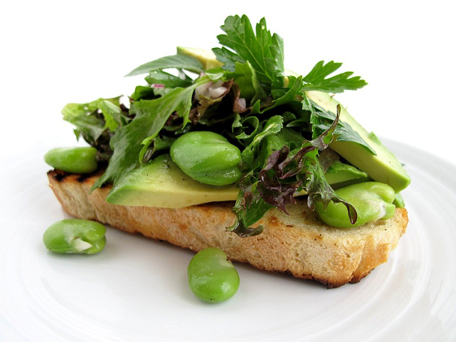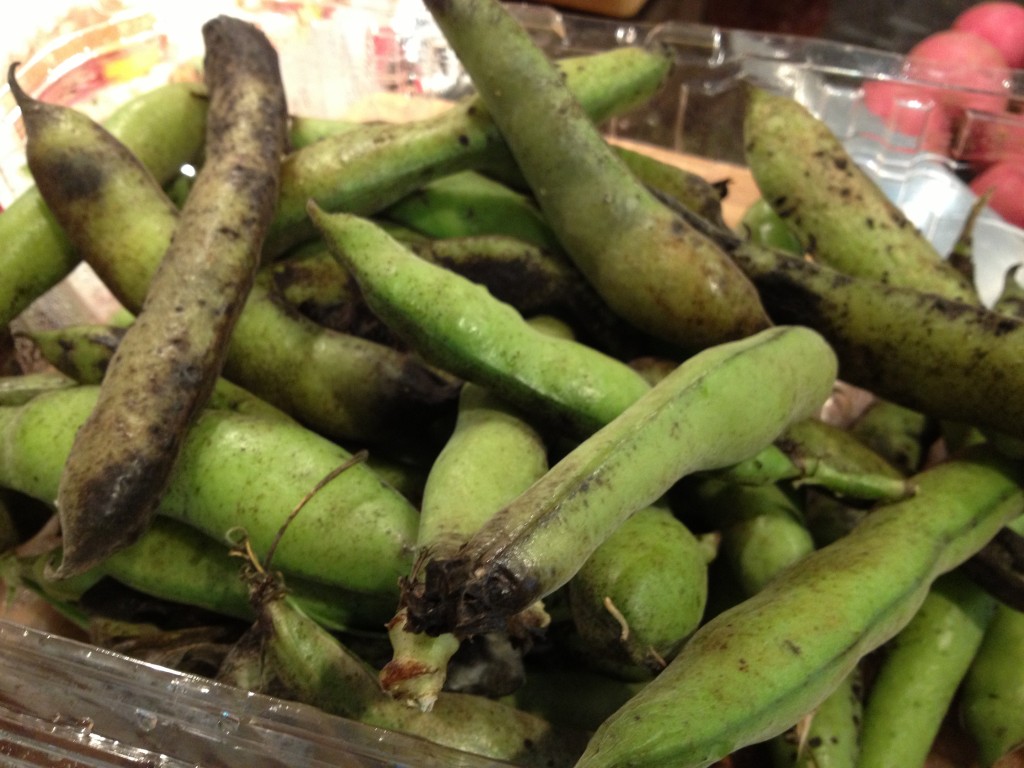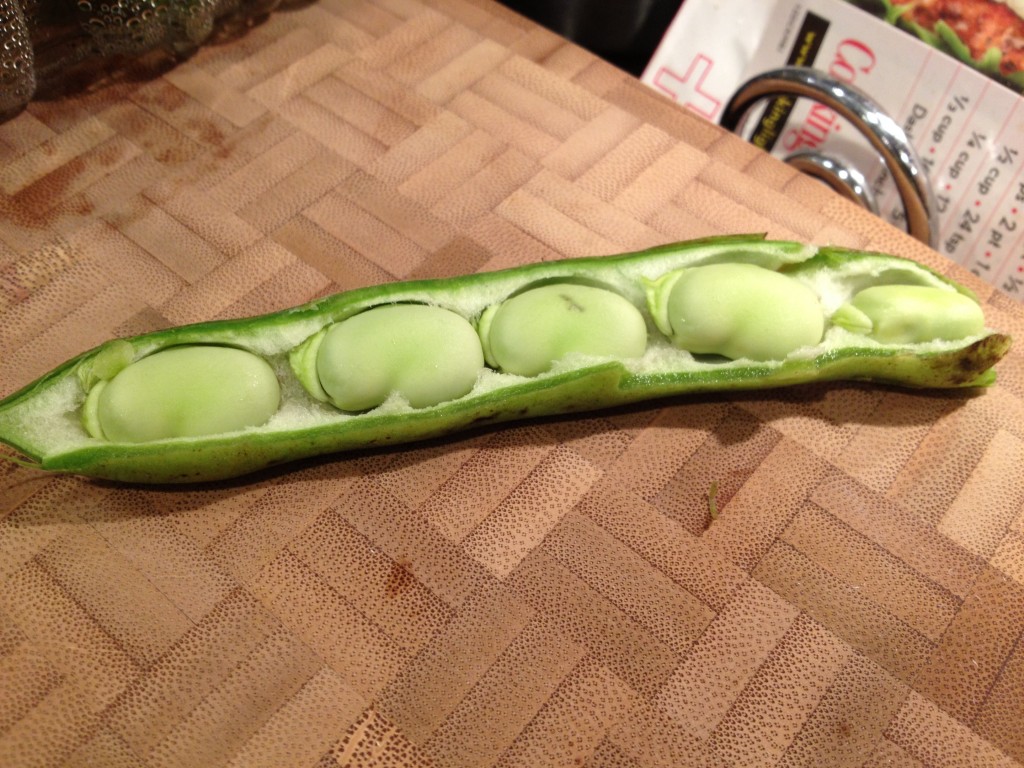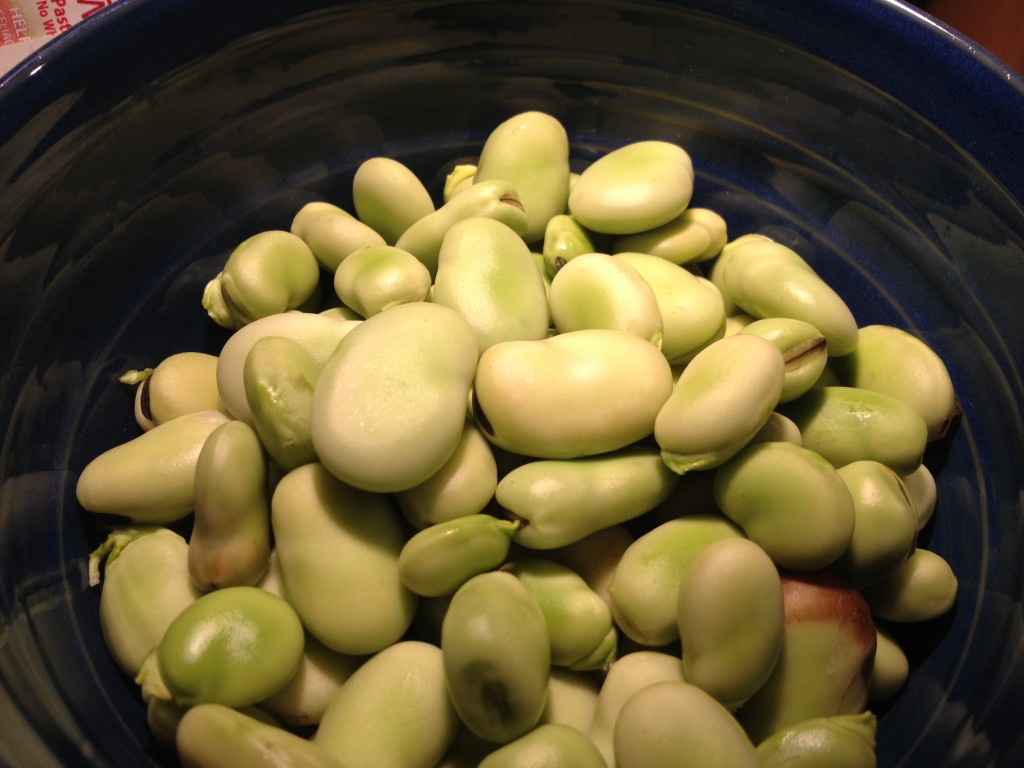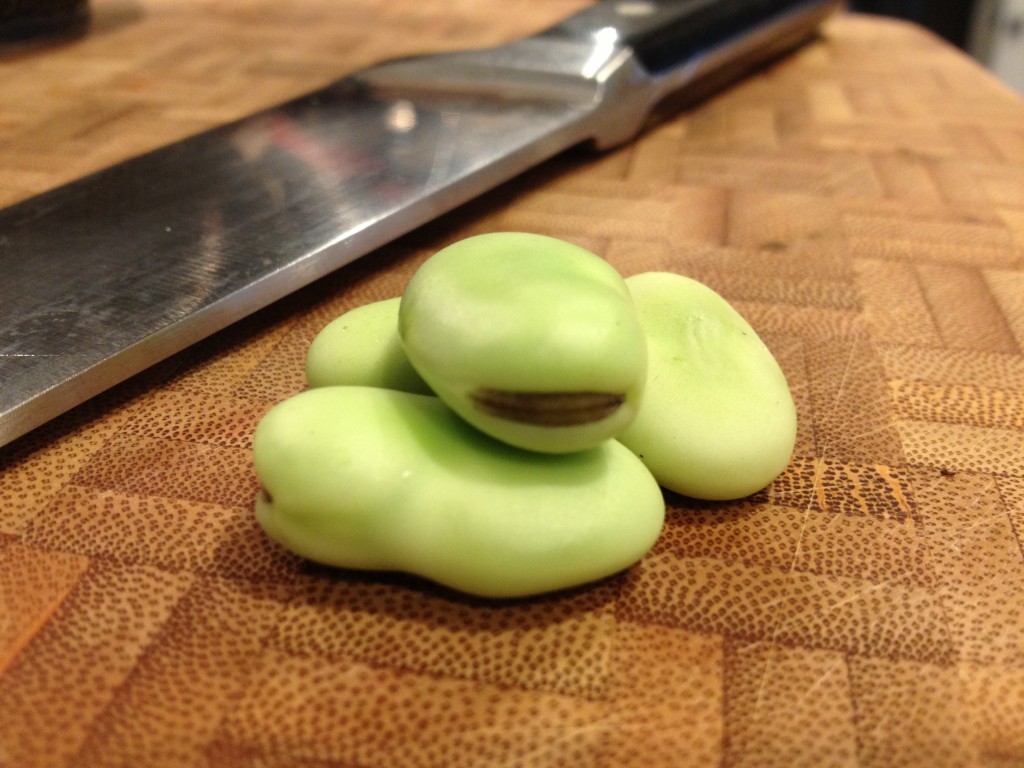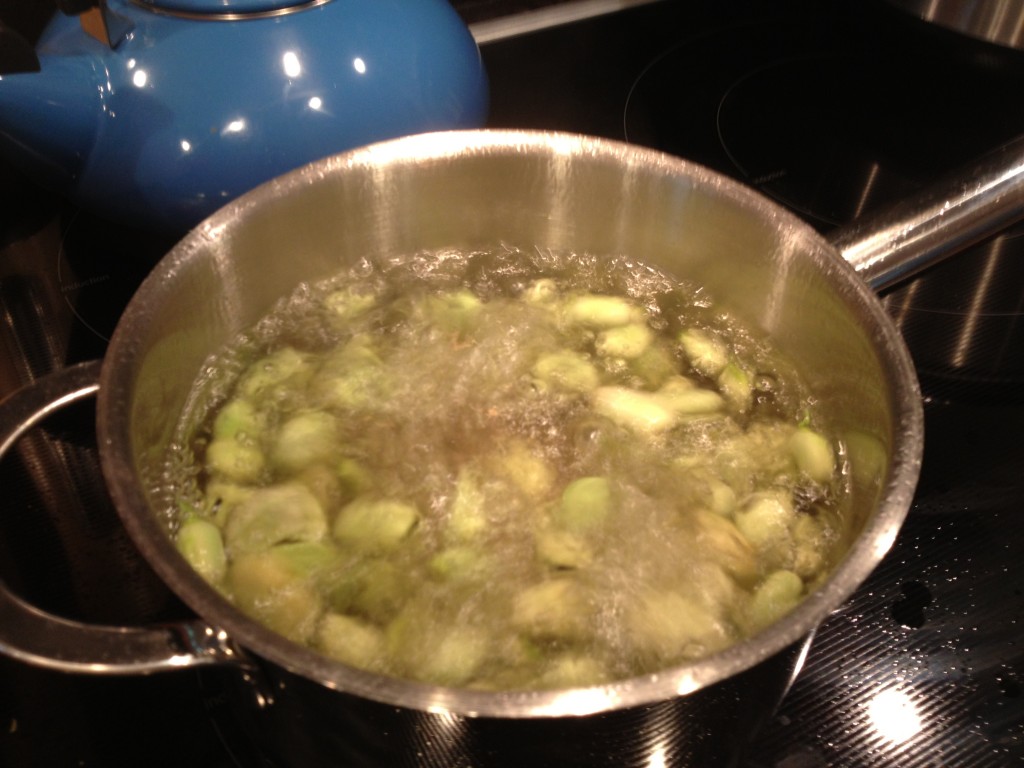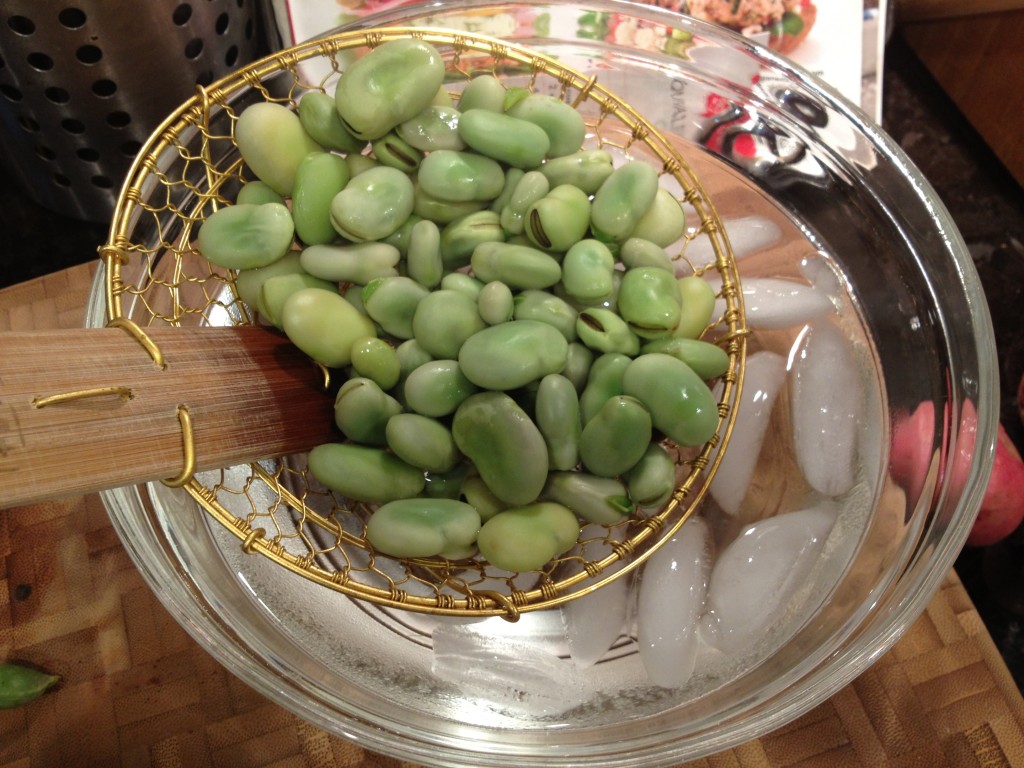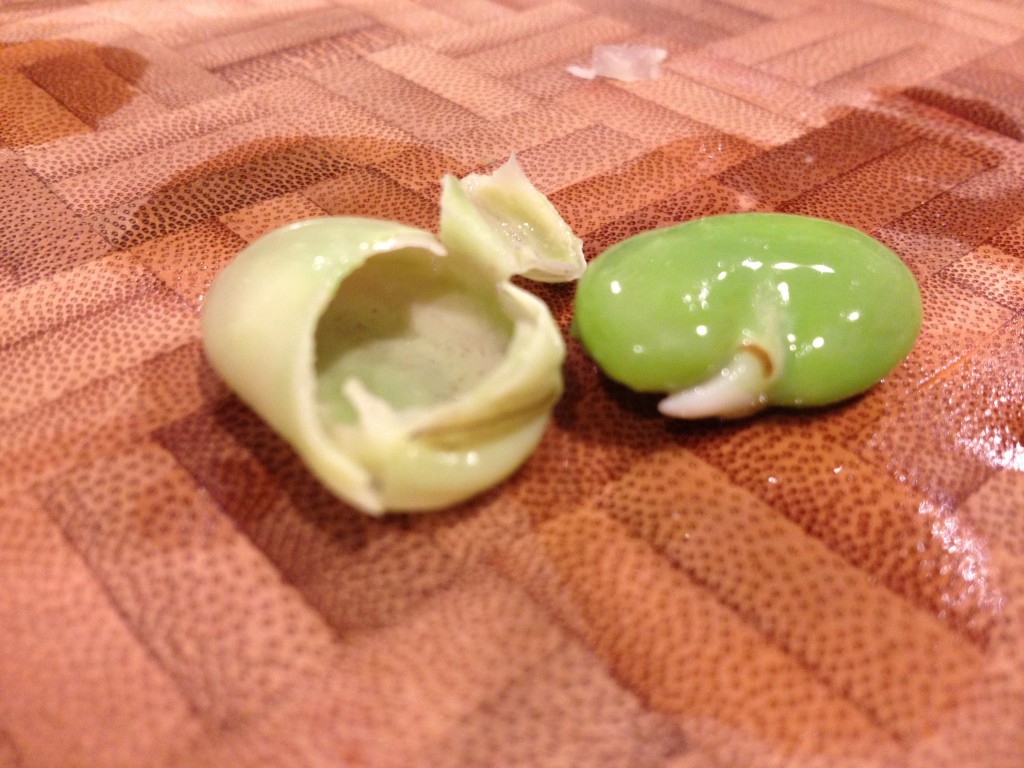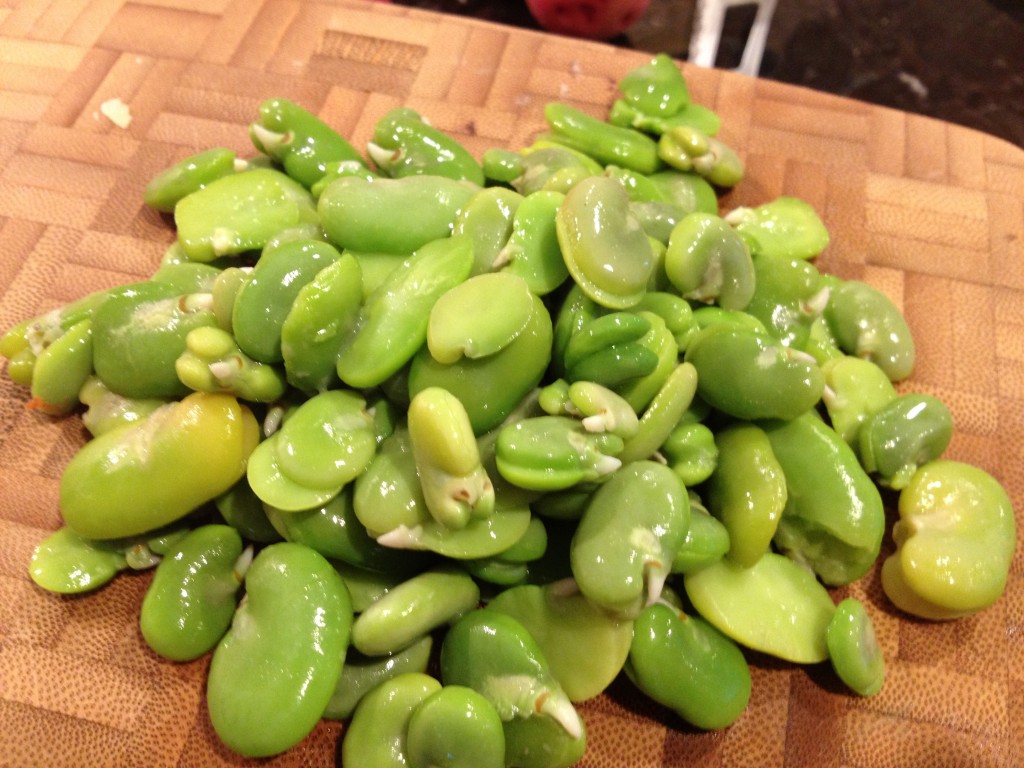
Fava Beans: The Good, The Bad and The Ugly
Tweet
You’ve heard about them and you’ve seen them in specialty and farmers markets… but have you ever actually TRIED cooking fava beans? Me neither… Not until they showed up in our farm CSA a few weeks ago. I’ve always adored them and get very excited when I find them on local restaurant menus, but every time I’ve seen them in my market (you can often find them at Russo’s in Watertown), I shy away because I’ve always heard they are a lot of work. And you know what? They are… BUT — they are totally worth it!
Fava beans, also known as Broad or Pigeon Beans, are a Spring delicacy that many culinarians anxiously await each year. With roots in Asia, the Middle East, South America, North Africa and Europe, these ancient beans have been around since about 6000 BC and were the ONLY beans that Europeans ate before the discovery of America! They are easy to cultivate and grow… but preparing them leaves much to be desired. That’s where the good, the bad and the ugly come in. Let’s start with the ugly…
The Ugly
The beans grow in big leathery pods, starting out green and maturing to blackish-brown, with a densely downy surface. The pods I picked (it was a pick-your-own crop) were about 3-8 inches in length and had lots of black spots and discoloration on them. At the time, I had no idea how to tell what was ripe and what wasn’t, but the farm hand mentioned that the black spots meant the beans were done.
By the second week of picking, I noticed many of the pods were mostly black. I picked anyway because I wasn’t sure. I now see (based on research I did) that the discoloration is completely normal.
The first step in preparing fava beans is to remove this pod. Each pod had anywhere from 2 to 6 beans in it. It was easy enough to rip the pod open and to pull the beans out. To do so, just snap the end of the Fava bean, near the stem side. Give it a light pull and the string will peel down till the end (just like shell peas), splitting the pod in half. You can also rip the pod in half and use your fingers to ‘squeeze’ the beans out of the open end.
The shelling itself, while easy, it sill quite time consuming depending on how many pods you have to husk. A good estimate for recipes is 1 pound of unshelled beans equals to about 1 cup of shelled beans.
As I continued shelling, I noticed the more black pods (the older ones) contained beans that were less green. The younger beans are green and the older they get, they become more pale yellow. In the end, I wound up with a mix of both younger and older, as I had picked two weeks in a row.
The Bad
So the beans are out… now what? Well, unfortunately you’re not done. The beans are not edible in this form. I’ve read that if the beans are super young and still very bright green and tender (out of the pod) you can eat them unpeeled… but my beans were more mature and certainly needed to have the outer-layer of the bean removed as well. That’s the bad part.
In order to remove the outer casing of the bean, you must parboil them to loosen the skin.
Take the shelled beans and drop them in boiling salted water for 30 seconds, which will loosen that outer skin.
I brought the water back to a rolling boil…
Have an ice bath ready. Remove the beans with a slotted spoon and plunge them into the ice bath for a few minutes to stop the cooking process. For this, I used my wok stainless steel strainer, which I really cannot live without. I use it all the time and I like that it’s large and holds a lot — making the straining process much faster.
Now for the really bad part — peel each bean by hand. The beans’ outer skin is thick and waxy. This part wasn’t easy. You may even need a knife (like I did) to get the skin open. This is certainly the most time consuming part of the process.
Once peeled, the beans are ready for use in your favorite recipes. As you can see, the two-step process really makes cooking with fava beans a labor of love.
The Good
Fear not… because the end result is so GOOD!!!!
The beans have a buttery texture, slight bitterness and lovely, nutty flavor. They are tender and delicate and are great just mashed with a little bit of butter and salt.
According to a great article on NPR.org:
Fava beans can be served simply boiled, mashed and spread on crostini, or added to spring stews and soups. They are often paired with artichokes or other spring vegetables such as peas and morels. I once made a fabulous osso buco with fresh fava beans.
And, favas are nutrition superheroes. They are high in fiber and iron, and low in sodium and fat. They have no cholesterol but so much protein, they are called the meat of the poor.
As a matter of fact, Italians credit the fava bean as a factor in saving Sicilians from starvation during a time of famine. Since then, the fava has been considered good luck. Now that luck – and magic – is being enjoyed at more American tables.
This was my fava bean haul when all was said and done (read: peeled and peeled)… Note the variation of color, based on the age of the beans.
Doesn’t look like much reward for all the work I did… but honestly? It was fun because it was a learning experience!
So what did we DO with the fava beans?? Well, that night we actually just picked at them with a sprinkling of salt! But there are loads of recipes and ideas out there. My favorites include The Huffington Post’s best Fava Bean Recipes for lots of lighter options and Saveur has a slew of heartier fava bean recipes for those unseasonably cool Spring and Summer evenings.
One that I really like is from the Huffington Post list, which is Fava Bean, Fresh Herb and Avocado Bruschetta… if you’re gluten free, just substitute the French country bread for the frozen gluten free baguettes that Whole Foods sells. They work just as well and the substitution makes the dish Paleo-friendly too! Once you get through the “ugly” and the “bad”, the recipe is pretty simple and comes together quickly with the end result being a party-worthy, beautiful, presentation!
